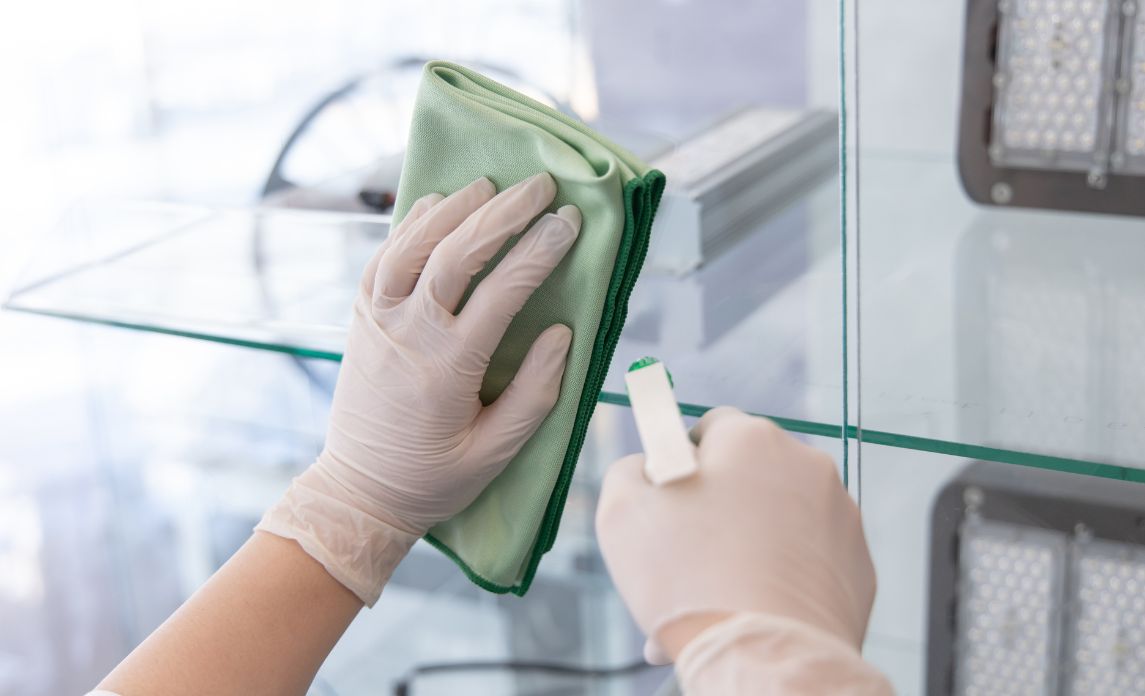Over the past couple of years, the commercial cleaning industry has undergone drastic changes. The COVID-19 pandemic, in particular, has caused a significant shift in the needs and priorities of customers. This, in turn, affected the demand for commercial cleaning services, especially in terms of frequency and thoroughness.
Now that the global situation has eased somewhat, the commercial cleaning industry is yet again changing. While the “old normal” won’t likely return anytime soon, there are many facets of a pre-COVID world that are now back in full swing. Thus, contract cleaners should keep an eye on trends so they can manage their expectations and make necessary adjustments to their offerings if or when needed.
Below, we discuss some of the things you can expect as the contract cleaning market and the industry as a whole in the next few years.
Continuing Demand for COVID-Related Services
One of the most immediate results of COVID-19 is the temporary closure of commercial establishments. This reduced the demand for contract cleaning, because there was no need for such services when buildings stood empty anyway.
That said, the outbreak of COVID-19 made people more conscious about cleanliness. Aside from keeping surfaces disinfected, there was also a clamour for air purification to stop the spread of the virus at all fronts.
Both of these situations drove cleaning companies to adapt. For example, there are those who expanded their services to include deep-cleaning for premises exposed to the virus. The demand for these high-level sanitation services is expected to continue, as COVID remains to be a serious health threat.
There’s also expected to be a growth in the contract cleaning industry in general, as more businesses open up. This is particularly true for restaurant and hospitality businesses, as these are among those that require the highest standards of cleanliness.
Sustainability and Environmental Concerns
The modern consumer is now more aware than ever of various social and environmental issues affecting the quality and safety of human life. In turn, this level of awareness influences their purchase decisions. For example, there is a growing interest in “capsule wardrobes” and slow fashion. These concepts prioritise having “basic” pieces of clothing that are long-lasting and universal, over fast, flashy fashion choices.
The same goes with contract cleaning. Nowadays, you’ll find more customers looking for commercial cleaners who use eco-friendly products made by responsible manufacturers through sustainable means. As a bonus, these products are much safer health-wise. Their ingredients are less likely to trigger allergies and similar conditions.
It’s wise to expect that sustainability and environmental consciousness won’t be fads but rather the standard. Even now, the demand for eco-friendly methods and products continues to grow. This has made such cleaning solutions more affordable and accessible, which fortunately makes it easier for cleaning companies to transition to greener options.
Wider Adoption of Cleaning Technologies
Cleaning involves a lot of physical labour, particularly for services such as carpet cleaning, pressure washing, and window cleaning. This can result in various issues affecting the health and productivity of cleaners.
Fortunately, there are various cleaning technologies that can make certain types of jobs easier. From automated floor polishers to robotic window cleaners, manufacturers are always coming up with innovations that make cleaning faster, easier, and more manageable. This allows cleaning companies to take on more clients without compromising quality.
Automated cleaning equipment also minimises risks. As an example, with COVID and other airborne diseases, you don’t have to worry as much about exposure. After the cleaning session, the machine can simply be disinfected to prevent contamination.
That said, do note that even the most modern cleaning machines still require human supervision at times. There’s also requisite maintenance periods and procedures to ensure that the equipment will run as intended for the longest possible time.
The downside is that these machines are cost-prohibitive at the moment. For smaller cleaning companies, you may want to invest more in skills training first, before allocating resources for tech.
Market Segmentation to Hyper-Specific Services
While multi-service cleaning companies still exist, the industry is also becoming more hyper-specific. This creates more opportunities for startups that don’t have a lot of capital to accommodate more types of cleaning.
Some of the most popular segments of cleaning include carpet cleaning, window cleaning, and post-construction cleaning. There are also those who specialise in COVID cleaning, which focuses on deep cleaning and disinfection.
There’s also segmentation based on end clients, with commercial cleaning remaining to be the most competitive and most sought-after contract cleaning service. The scope includes office, school, and restaurant cleaning, among others. That said, contract cleaning for the construction industry is seen to rise in the next few years.
More Affordable, High-Quality Services
Finally, because of the renewed focus of companies on health and cleanliness, it’s expected that more contract cleaning clients will be more exacting than before. It’s best to review your own cleaning companies policies and conduct regular audits of your work output. Doing such will ensure that you will remain competitive even in the midst of an increasing number of new businesses.
At the same time, it’s crucial to learn how to price your services right. Even if there are more companies operating, it’s unwise to lower your prices too much. This undermines the entire industry, as well as your own potential earnings.
Last but certainly not least, customers will continue to expect stellar service before, during, and after the cleaning. Make it a habit to ask for feedback so you can improve where it’s needed. You may also want to invest in various kinds of software, like CRM tools or scheduling software, so you can fill in gaps.
With all of these in mind, you can better prepare your cleaning business to respond to your customers’ needs and expectations in the coming years.


